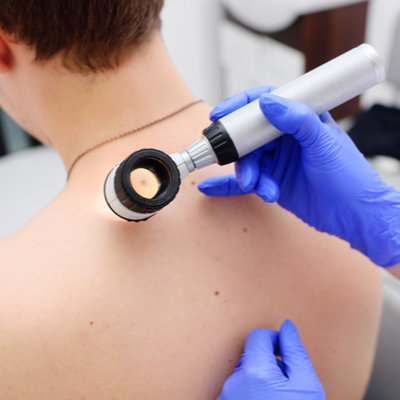 OVERVIEW
OVERVIEW
If you or someone you know has been recently diagnosed with Dermatofibrosarcoma protuberans (DFSP), you may be feeling overwhelmed and scared. Don’t worry; we are here to help. This article will discuss everything you need to know about DFSP, including what it is, how it is treated, and the side effects of treatment. We hope that this information will help put your mind at ease and allow you to face DFSP head-on!
What Is Dermatofibrosarcoma Protuberans (DFSP)?
DFSP is a type of skin cancer that begins in the deep layers of the skin. It most commonly occurs on the trunk (chest or back) and the arms, legs, or head. DFSP is usually slow-growing and may not cause any symptoms for years. However, as it grows larger, it can form a raised, firm lump on the skin that may be reddish, purple, or tan. DFSP can also cause the skin to thin and break down, resulting in an ulcer (open sore).
While DFSP is not life-threatening cancer, it can be very aggressive and difficult to treat. If left untreated, DFSP can grow large and invade nearby tissues, including the bone. DFSP can also spread to other body parts through the bloodstream or lymph nodes.
What are the Symptoms Of DFSP?
The most common symptom of DFSP is the development of a raised, firm lump on the skin. This lump may be reddish, purple, or tan. DFSP can also cause the skin to thin and break down, resulting in an ulcer (open sore).
Other symptoms of DFSP include:
- Pain
- Itching
- Burning sensation
- Tingling
- Numbness
How is DFSP Diagnosed?
DFSP is usually diagnosed with a biopsy. During a biopsy, your doctor will remove a small piece of the lump or affected skin and send it to a laboratory for analysis. Your doctor may also order other imaging tests, such as computerized tomography (CT) scan or magnetic resonance imaging (MRI), to help determine the extent of the tumor.
Is There a Cure For DFSP?
There is no cure for DFSP, but treatment can often remove the tumor and prevent it from returning. In some cases, radiation therapy or chemotherapy may be recommended to help reduce the risk of recurrence.
If you or someone you know has been diagnosed with DFSP, don’t hesitate to reach out to your doctor or a support group for more information and resources. Remember, you are not alone!
How is DFSP Treated?
The most common treatment for DFSP is surgery. Your doctor will remove the tumor and a margin of healthy tissue around it. In some cases, radiation therapy or chemotherapy may be recommended before or after surgery.
What are the Side Effects of DFSP Treatment?
The side effects of DFSP treatment will vary depending on the type of treatment you receive.
- Surgery, for example, may cause scarring.
- Radiation therapy can cause
- Fatigue
- Skin changes, and
- Hair loss.
- Chemotherapy can cause
- Vomiting
- Hair loss, and
- Low blood cell counts.
It is important to discuss the potential side effects of DFSP treatment with your doctor before starting any treatment.
What is the Prognosis for Someone with DFSP?
Prognosis refers to a prediction of the likely outcome of a disease. For someone with DFSP the prognosis depends on many factors, including the stage of the tumor, the type of treatment received, and the person’s overall health. However, most people with DFSP can expect to have a good outcome.
Can DFSP be Prevented?
There is no sure way to prevent DFSP. Still, you can reduce your risk by avoiding exposure to known carcinogens and radiation, such as ultraviolet (UV) radiation from the sun or tanning beds. You should also perform self-exams of your skin regularly, and you should also see your doctor regularly for skin checks.
Conclusion
DFSP is a type of skin cancer that can be very aggressive and difficult to treat. However, with early diagnosis and treatment, most people with DFSP can expect to have a good outcome. Remember, you are not alone! Don’t hesitate to reach out to your doctor.


